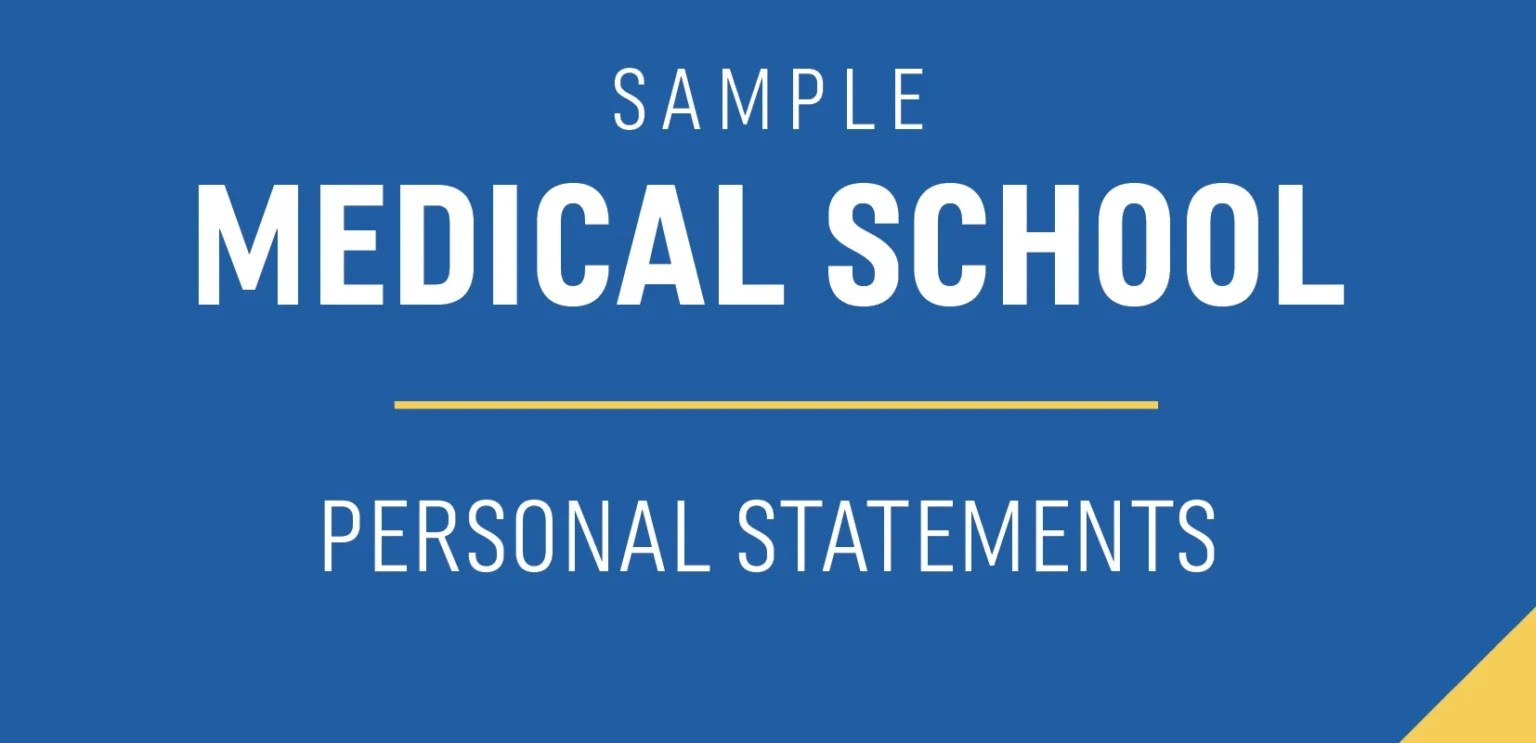When applying to medical school, one of the most critical components of your application is the medical school’s statement. This essay isn’t just a formality; it’s an opportunity to show who you are beyond your grades and test scores. A well-crafted personal statement can make a significant difference in setting you apart from other applicants.
In this guide, we’ll walk you through everything you need to know about writing a compelling medical school personal statement that resonates with admissions committees and showcases your unique qualities, experiences, and passion for medicine.
What Is a Medical School Personal Statement?
A medical school personal statement is a written narrative highlighting your motivations for pursuing a career in medicine, your experiences in the field, and the qualities that make you a strong candidate. You can speak directly to the admissions committee, giving them insight into your journey and why you’re committed to becoming a physician.
Depending on the medical school, the personal statement is often limited to 4,500 characters, approximately 700-800 words. This space should be used wisely to tell your story meaningfully, concisely, and organized.
Why Is It So Important?
The medical school personal statement is your opportunity to stand out. It’s the place where you can explain:
- Why you want to pursue medicine.
- What experiences have shaped your understanding of the medical field?
- You’ve demonstrated empathy, resilience, and a strong work ethic.
- Why you would be a valuable addition to the medical school community.
A personal statement can either elevate your application or leave the committee indifferent. Let’s explore how to ensure that your essay does the former.
How to Start Writing Your Medical School Personal Statement
Beginning your medical school personal statement might feel overwhelming, but breaking it down into smaller steps can help ease the process.
Step 1: Reflect on Your Journey
Before you even begin typing, spend some time reflecting on your journey. Ask yourself:
- What sparked my interest in medicine?
- Are there any significant life experiences that influenced my decision to pursue medicine?
- What unique qualities do I bring to the medical profession?
- How have my experiences—academic, clinical, or personal—prepared me for this career?
Taking time to reflect will help you craft an authentic and compelling narrative.
Step 2: Brainstorm Key Themes
Once you’ve reflected on your journey, identify the key themes or messages you want to convey in your essay. Some of these might include:
- Passion for healthcare: When did you first realize you wanted to become a doctor?
- Experience: What clinical, volunteer, or research experiences have solidified your decision?
- Personal growth: How have challenges or failures shaped your resilience and perseverance?
- Values: What core values drive your desire to care for others?
Step 3: Create an Outline
Now that you have some themes in mind create an outline to organize your thoughts. This outline doesn’t have to be rigid but can help guide your writing and keep your essay focused.
An outline might look something like this:
- Introduction: Share a personal anecdote that sparked your interest in medicine.
- Body: Discuss critical experiences that have prepared you for medical school, highlighting your unique qualities.
- Conclusion: Summarize your passion for medicine and your readiness to take on the challenges of medical school.
Writing the Introduction
The introduction is arguably essential to your medical school personal statement. It’s where you grab the reader’s attention and set the tone for the rest of your essay. Avoid starting with clichés like “I’ve always wanted to be a doctor.” Instead, opt for a personal story or moment that inspired your journey into medicine.
Example Introduction:
“The beeping of the heart monitor became a familiar sound during my summer internship at the local hospital, but Mrs. Thompson’s smile left the greatest impact. Watching her regain strength after a major surgery, I realized that medicine is about much more than procedures—it’s about empowering patients through compassionate care.”
This opening sets the stage for a story, immediately drawing the reader in with a specific experience rather than a generic statement.
Highlighting Your Experiences
The body of your medical school personal statement is where you’ll delve into your experiences and how they’ve shaped your decision to pursue medicine. Be selective about the experiences you include; quality over quantity is vital.
Focus on experiences that have:
- It helped you understand the challenges and rewards of a medical career.
- You showcased your commitment to service and patient care.
- We have developed essential leadership, communication, and critical thinking skills.
Essential Experiences to Highlight:
- Clinical exposure: Shadowing physicians, working as a scribe, or volunteering in hospitals.
- Research: Involvement in medical or scientific research projects.
- Volunteer work: Community service that shows your commitment to helping others.
- Personal challenges: Overcoming obstacles that demonstrate your resilience and dedication.
Example Experience:
“During my volunteer shift in the pediatric oncology unit, I witnessed the strength and courage of young patients facing difficult diagnoses. One afternoon, I sat with a young boy named Alex, helping him with his schoolwork while he awaited chemotherapy. His unwavering optimism taught me the importance of emotional support in the healing process, a lesson I will carry throughout my medical career.”
This example provides a vivid picture of an experience, demonstrating empathy and dedication to patient care.
Demonstrating Key Qualities
Admissions committees are not just looking for students with high GPAs—they want future doctors with the qualities necessary to thrive in the demanding world of healthcare. In your medical school personal statement, be sure to highlight the following attributes:
- Compassion and empathy: Show that you understand and care about patients’ emotional and psychological needs.
- Resilience: Share how you’ve overcome personal and academic challenges to pursue your goals.
- Leadership: Demonstrate moments where you’ve taken initiative, whether in a clinical setting or through extracurricular activities.
- Dedication to learning: Medicine is a lifelong learning journey. Highlight your curiosity and commitment to staying current with medical advancements.
Example of Resilience:
“Balancing a full course load with my duties as a volunteer EMT wasn’t easy, but it taught me invaluable time management skills and reinforced my passion for patient care. Whether it was responding to late-night emergency calls or studying for exams, I learned how to thrive under pressure—a skill I know will serve me well in medical school.”
Structuring Your Statement
A well-structured medical school personal statement makes your essay easier to read and ensures that your key points come across clearly. Here’s a simple structure you can follow:
SectionWhat to Include
Introduction: Personal anecdote or story that introduces your motivation.
Body Experiences that showcase your passion, skills, and values.
Conclusion Reflection on your journey and readiness for medical school.
Common Mistakes to Avoid
Even the most well-intentioned applicants can fall into common pitfalls when writing their medical school personal statement. Here’s a list of mistakes to avoid:
- Being too vague: General statements like “I want to help people” don’t stand out. Be specific about why you want to pursue medicine.
- Listing achievements: Avoid turning your statement into a resume. Focus on storytelling rather than listing accomplishments.
- Using clichés: Phrases like “ever since I was a child, I’ve wanted to be a doctor” are overused and don’t add value to your narrative.
- Lack of reflection: It’s not enough to list experiences—you need to explain what you learned from them and how they shaped you.
- Ignoring the character limit: Stick to the character limit set by the medical school. Being concise is crucial.
How to Stand Out
The competition to get into medical school is fierce, so how can you make sure your medical school personal statement stands out?
- Be Authentic
Admissions committees can spot a disingenuous essay from a mile away. Be honest about your motivations and experiences. Authenticity always resonates more than exaggeration.
- Show, Don’t Tell
Instead of saying you’re compassionate, show it through a story or experience. Use specific examples to illustrate the qualities you want to highlight.
- Keep the Reader Engaged
Remember, the admissions committee reads hundreds of personal statements. Keep your essay engaging by varying sentence structure, using descriptive language, and focusing on storytelling.
Conclusion: The Final Touch
As you wrap up your medical school personal statement, tie everything together by reinforcing your passion for medicine and your readiness to take on the challenges of medical school. Your conclusion should leave the reader with a lasting impression of yourself and why you’re dedicated to becoming a physician.
Example Conclusion:
“Medicine is not just a profession for me—it’s a calling. From my early experiences volunteering in underserved communities to my clinical internships, I’ve seen firsthand the profound impact compassionate care can have on individuals and their families. I’m excited to bring my unique experiences, resilience, and dedication to medical school, knowing that each step brings me closer to fulfilling my dream of becoming a physician.”
By following the tips and strategies outlined here, you can craft a medical school personal statement that reflects your passion, showcases your experiences, and sets you on the path to achieving your dream of becoming a doctor.





